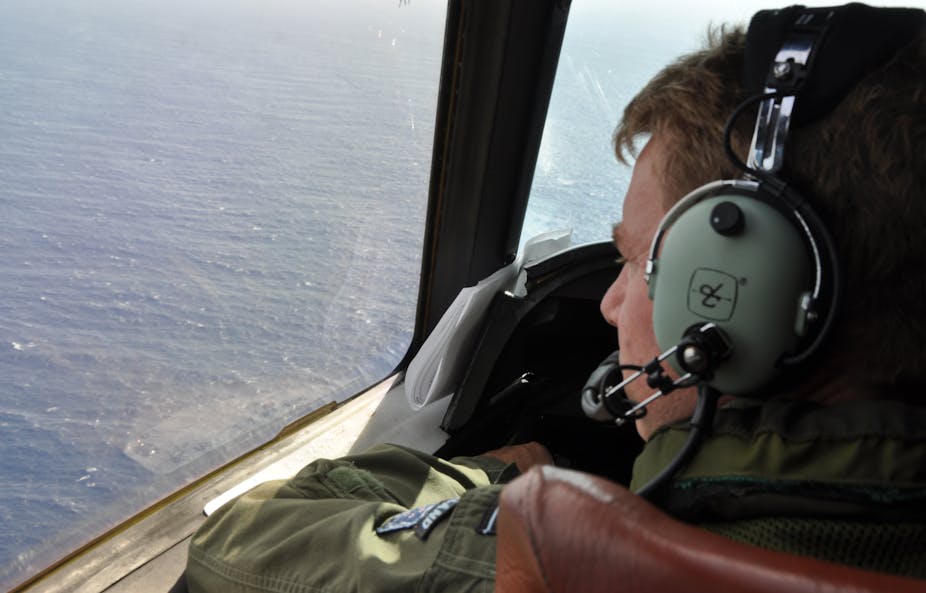Frustratingly, the search for missing Malaysia Airlines flight MH370 has turned up many floating objects, but none of them are from the plane.
That’s largely because the latest search area is likely to be in one of the world’s hotspots for accumulated debris – an area nicknamed the Indian Ocean garbage patch.

Location unknown
Based on satellite tracking and fuel consumption of the MH370 aircraft, it has been proposed that the plane probably crashed somewhere in the southeast Indian Ocean.
As the exact location is unknown, the current priority is to locate floating debris from the aircraft, so that oceanographic models can be used to narrow the search area.
The sizes and types of floating debris resulting from an aircraft crash depend on how it hit the water. With previous plane crashes in the ocean, the floating debris included pieces of the aircraft’s structure (such as wings and fuselage), cabin equipment including seat cushions and life vests, personal items like water bottles, and victims’ bodies.
While some pieces of debris sink over time, others will stay floating on the surface – the only clues to the location of the rest of the wreck.
Vast debris fields
The problem is that there are already vast amounts of debris floating in the world’s oceans. The presence of this debris in the search region means that crews are wasting resources and time trying to identify floating objects unrelated to MH370.
The most abundant type of marine debris is tiny plastic fragments less than 5 mm in length. However, these do not hamper sea search operations, as they are invisible to observers aboard ships and airplanes.
Ocean debris large enough to be spotted from aboard ships are mostly chunks of plastic left over from the disintegration of larger objects. Plastic bottles, bags, buoys, rope, expanded polystyrene items, and fishing nets are also very common. Nets are often big enough to be seen by airborne searchers.

Swirling currents collect rubbish
Although rubbish is found throughout the oceans, some places are more litter-strewn than others. Unfortunately for those looking for MH370, their search area is probably right in the middle of one such garbage patch.
Each of the world’s five major ocean basins feature large, loop-shaped surface currents called gyres. Driven by wind patterns in the subtropics, the gyres in the Northern Hemisphere (the North Pacific and North Atlantic gyres) rotate clockwise, whereas those in the Southern Hemisphere (the South Pacific, South Atlantic and Indian Ocean gyres) spin anti-clockwise.
All of these gyres funnel debris into “convergence zones” where floating rubbish accumulates – hence the nickname “ocean garbage patches”.

Surveys of ocean debris have confirmed the locations of some of these plastic pollution hotspots, although the existence of others is largely surmised using computer models.
We know that large plastic items, of the kind that could frustrate the search for MH370, are found at high densities in some well-studied areas. More than 10 pieces per square kilometre have been found in waters near populated coastal areas, in the Mediterranean Sea, and in the subtropical North Pacific (the infamous North Pacific garbage patch).
But the garbage patch in the southern Indian Ocean is still poorly mapped, and model predictions of its whereabouts differ considerably between studies. At least one analysis puts the current MH370 search area right in the middle of the Indian Ocean garbage patch (although other research says otherwise), meaning the chances of encountering unrelated debris may now be higher than in previous search regions.
Describing the difficulty of the search, Australian Defence Force vice-chief Mark Binskin said: “We’re not searching for a needle in a haystack, we’re still trying to define where the haystack is”.
Add ocean debris into the mix, and we may very well find that when we finally track down the haystack, it’s full of things that look like needles.

